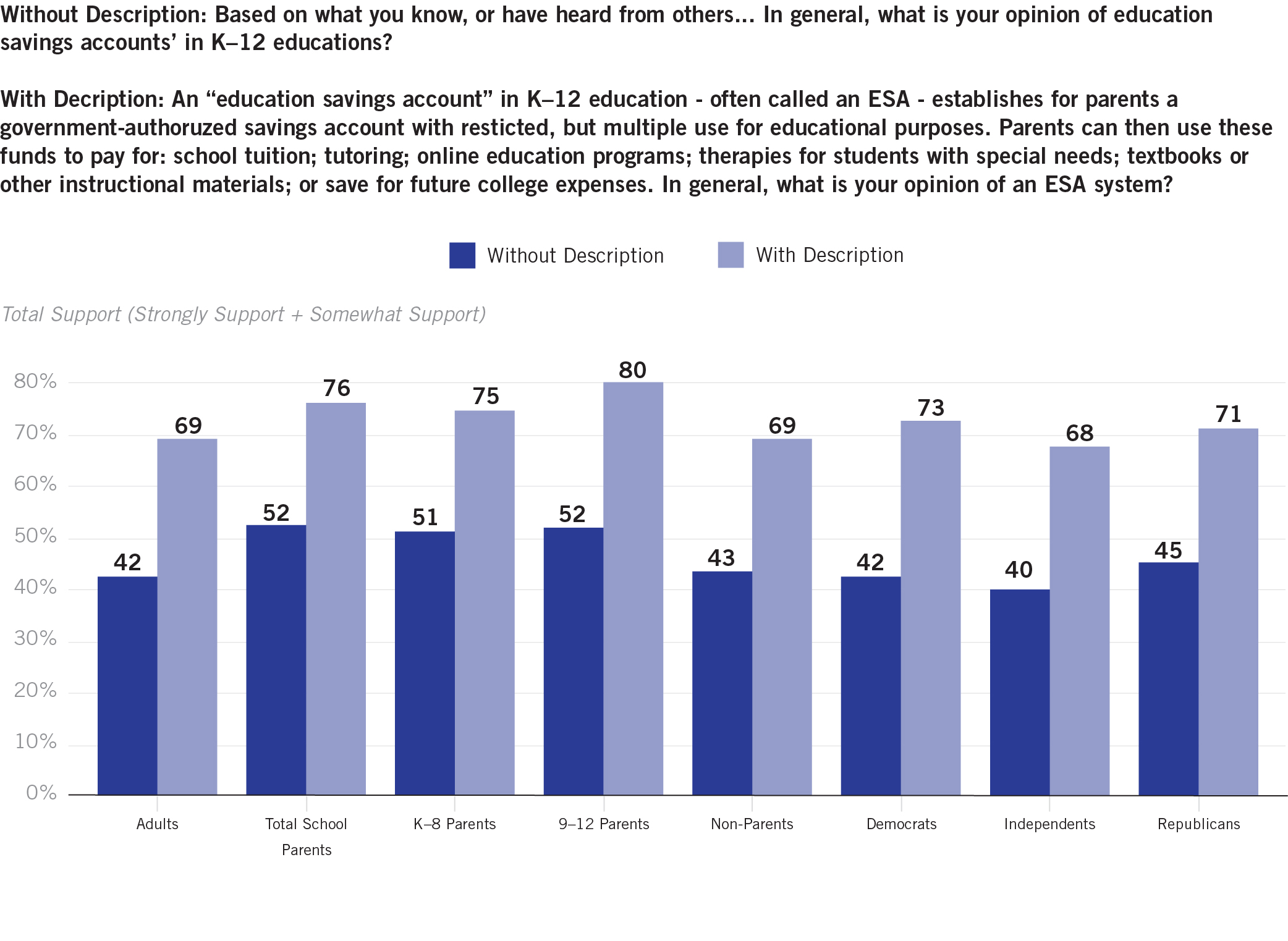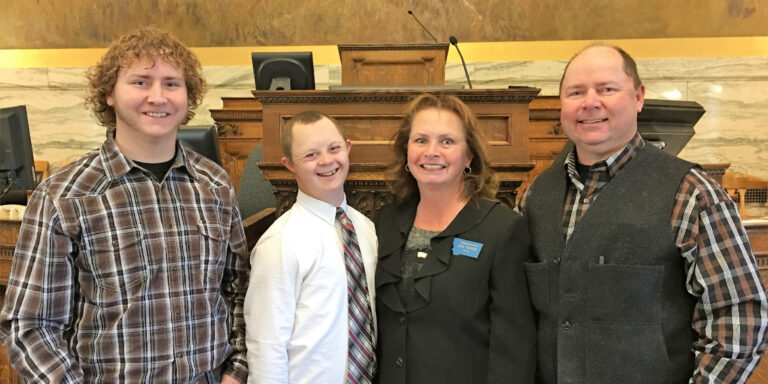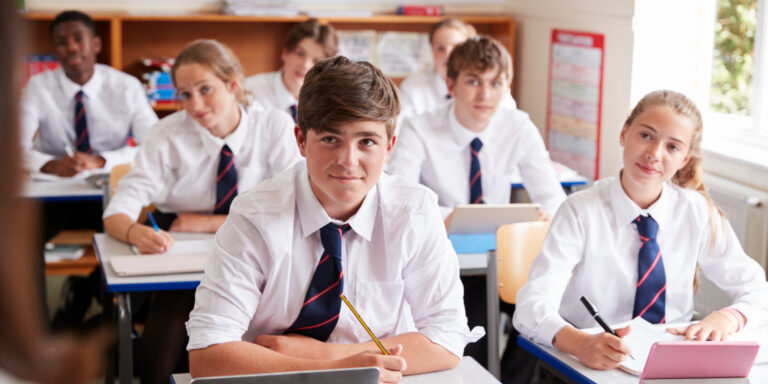EdChoice Public Opinion Tracker: Top Takeaways May 2020
A lot of major public developments are unfolding right now. We are truly living in historic times. Schooling questions and issues may not be top of mind for many of you, but if they are, we have new monthly tracking polling results and downloadable files on our Public Opinion Tracker.
In this blog post, I share eight takeaways from our most recent wave of survey polling data (May 14–15). We refresh our tracker at least once per month and hope the regular updates can be useful to you as we all consider our back-to-school plans. As always, please let me know at paul@edchoice.org if you have any questions about our data or findings, or if you have ideas for new questions or topics.
1. Americans give their local schools relatively high marks for their responses to COVID-19, compared to other institutions. Americans are more likely to give high grades (A, B) to local institutions in their responses to the COVID-19 pandemic, especially their local schools. This finding makes a lot of sense and is consistent with another question we ask about how respondents view the direction of K–12 education. Proximity matters. The COVID-19 pandemic will likely persist into 2021, so it will be interesting to see if this tendency to give high grades grows or erodes over time.

 2. April stands out as the most disruptive month so far. At that time, majorities said the coronavirus was “very disruptive” to their communities, indicated by the darker blue-shaded cells in the table below. The proportions of respondents giving that response generally dropped by 6–10 percentage points in May. The greatest shock at all levels—personal, household, community— happened in April. Up to this point during the pandemic the peak of daily COVID-19 deaths in most states occurred in the second half of that month.
2. April stands out as the most disruptive month so far. At that time, majorities said the coronavirus was “very disruptive” to their communities, indicated by the darker blue-shaded cells in the table below. The proportions of respondents giving that response generally dropped by 6–10 percentage points in May. The greatest shock at all levels—personal, household, community— happened in April. Up to this point during the pandemic the peak of daily COVID-19 deaths in most states occurred in the second half of that month.
 3. Parents still say they feel prepared for facilitating online learning. But the proportion saying they feel “very prepared” has dropped by 8 percentage points since April. We will continue to ask this question as we head toward the next school year. To what extent these responses are relative to personal or external expectations is unknown. If personal or external (i.e. school) expectations change over time, then perhaps we will see these numbers fluctuate even more than we have until now.
3. Parents still say they feel prepared for facilitating online learning. But the proportion saying they feel “very prepared” has dropped by 8 percentage points since April. We will continue to ask this question as we head toward the next school year. To what extent these responses are relative to personal or external expectations is unknown. If personal or external (i.e. school) expectations change over time, then perhaps we will see these numbers fluctuate even more than we have until now.

4. As of May, parents are most worried about missed instruction time and COVID-19 exposure at school. These results—if they persist over the summer—could have implications for public officials’ decision-making as we contemplate and plan for how we reopen schools in the fall. At least three out of four parents are at least somewhat concerned about virus exposure at school. Our findings seem to be consistent with recent AEI/Echelon Insights surveys of public school parents. That project also found that parents believed their children were learning less now with e-learning. They also said they were not in any rush to reopen schools.
 5. A majority of parents are open to e-learning next school year, if allowed the option as an alternative to physically returning to school. Nearly one-third (32%) said they would “very likely” opt for e-learning as an alternative to going back in the classroom. Could optional sorting of those who prefer classroom learning vs. distance learning help with social distancing measures? The polling data suggest there could be a path forward to allow more parent choice and flexibility while addressing space and safety considerations at school. This should be explored much more closely at the local level. National numbers like what we present here can mask the proportions we might find at the school or district levels.
5. A majority of parents are open to e-learning next school year, if allowed the option as an alternative to physically returning to school. Nearly one-third (32%) said they would “very likely” opt for e-learning as an alternative to going back in the classroom. Could optional sorting of those who prefer classroom learning vs. distance learning help with social distancing measures? The polling data suggest there could be a path forward to allow more parent choice and flexibility while addressing space and safety considerations at school. This should be explored much more closely at the local level. National numbers like what we present here can mask the proportions we might find at the school or district levels.
 6. As of May, parents’ opinions and comfort levels were pretty evenly spread out for returning their children to school. Roughly one-quarter of parents gave each of three different responses: very comfortable, somewhat comfortable, not that comfortable. Eighteen percent of parents say they are “not at all comfortable.” If comfort levels don’t increase in coming months, then hard decisions lay ahead for school leaders and public officials.
6. As of May, parents’ opinions and comfort levels were pretty evenly spread out for returning their children to school. Roughly one-quarter of parents gave each of three different responses: very comfortable, somewhat comfortable, not that comfortable. Eighteen percent of parents say they are “not at all comfortable.” If comfort levels don’t increase in coming months, then hard decisions lay ahead for school leaders and public officials.

7. School parents are twice as likely to say they are at least somewhat more favorable toward homeschooling because of the coronavirus pandemic. The month-to-month changes are interesting. From March to April we see increased negative sentiment (+9 points) and reduced positive sentiment (-3 points). That is the time frame most parents were probably feeling the stressful adjustments and effects of moving to distance learning. From April to May the trends change. We observe a steeper increase of positive responses (+7 points), outpacing the negative response (+3 points). And overall the most recent wave shows hardening of opinions on this question. In May, a larger proportion of parents expressed a clear view than in March (88% vs. 72%).
 8. Solid majorities of the general public support education savings accounts (ESA), school vouchers, and public charter schools. The poll numbers have changed little from April to May. Pluralities of support already exist when respondents are not given any kind of description—based on what they already know, perceive or have heard. Once given a description of ESA policies, support grows much higher.
8. Solid majorities of the general public support education savings accounts (ESA), school vouchers, and public charter schools. The poll numbers have changed little from April to May. Pluralities of support already exist when respondents are not given any kind of description—based on what they already know, perceive or have heard. Once given a description of ESA policies, support grows much higher.



NOTE: A lot of organizations are responding and doing great survey work in the turbulent times we are living in right now. I’ve started to catalog those polls and surveys asking COVID-19 and pandemic questions related to K–12 education. That Box.com page will be updated on a rolling basis as polls get released. Please don’t hesitate to let me know if I’m missing any to date.




